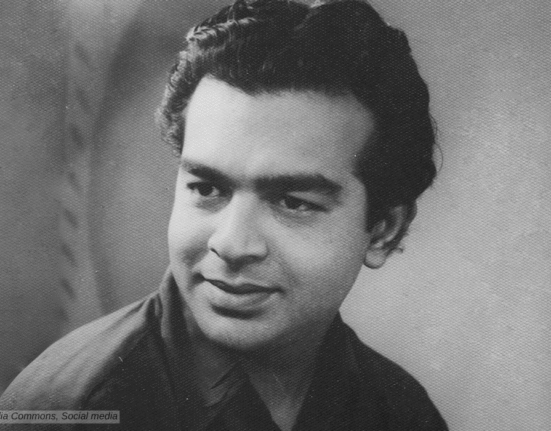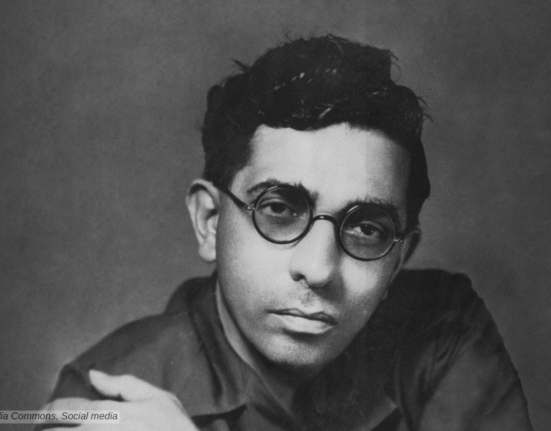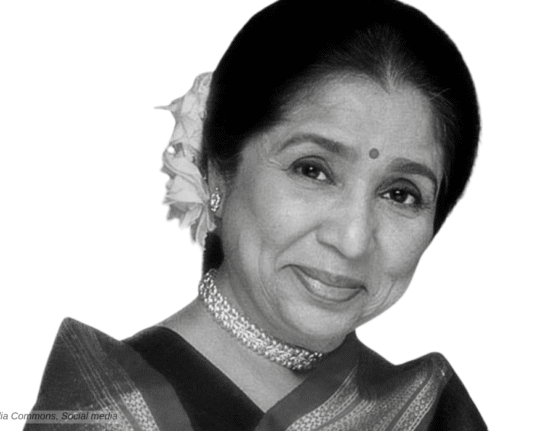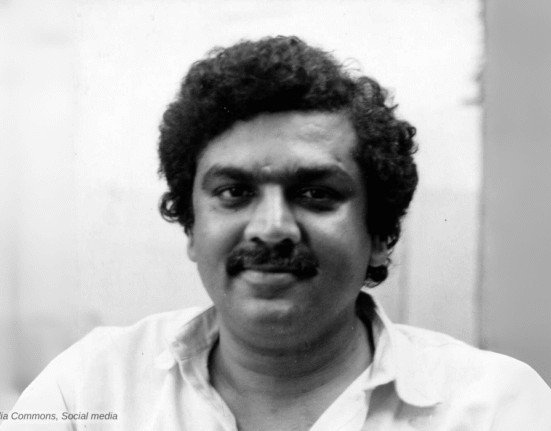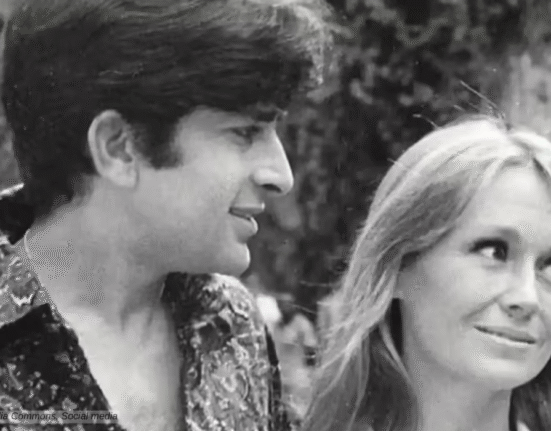Mahendra Kapoor was one of the greatest playback singers of the Hindi film industry. In a long and illustrious career of over four decades, he sung thousands of songs, which are still cherished by music lovers.
Early Life
Mahendra Kapoor was born on 9 January 1934 in Amritsar. He was grow up in Bombay, where his family moved soon after his birth. It was in Bombay that Kapoor got his education. When he was only seven or eight years old, he started learning music from actor BM Vyas, who was the brother of Bharat Vyas. It was the time when he became a fan of Mohd Rafi and decided to meet him. The young Mahendra Kapoor went to meet Rafi Saab at his home. Impressed by his dedication, Rafi Saab took him under his wing and started to teach him. Apart from Rafi, he also learnt classical music from Pt. Hussanlal, Pt. Jagannath Bua, Ustad Niaz Ahmed Khan, Ustad Abdul Rehman Khan and Pt. Tulasidaas Sharma.
Musical Journey

Kapoor started his career by working in the orchestra of music composer V. Balsara, who gave him his first chance as a playback singer in the 1953 film “Madmast,” where he sang “Kisi ke zulm ki tasveer hai mazdoor ki basti.”
and “Unhe dekhe toh woh munh pher… Hume yaankhein dikhaate hain.”
His first solo song came in 1956, with “Tera dar ki bhikh mangi hai data duniya saari,” in Diwali Ki Raat under the music direction of Snehal Bhatkar.
He then sang for films like “Lalkar,” Ek Shola,” “Jailor,” Sanskar,” “Black Mailer,” and many more. One of the early songs of Mahendra Kapoor was from “Sohni Mahiwal,” “Chand chhupa aur taare doobe, raat gazab ki aayi,” penned by Shakeel Badayuni and set to music by Naushad.
Kapoor’s breakthrough came with V. Shantaram’s “Navrang” in 1958, which he begged after he won the Metro Murphy All-India singing competition. In Navrang, he sang one of the most iconic love songs, “Aadha Hai Chandrama Raat Aadhi.” He also sang one the most beautiful Holi songs of all time, “Are Ja Re Hat Natkhat, Na Chhoo Re Mera Ghunghat,” with Asha Bhosle. His other songs from the film include “Shyamal Shyamal Baran,” and ‘Yeh Maati Sabhi Ki Kahani.” The film had the music if great C. Ramchandra. After Navrang, Kapoor went on to sing for some other V. Sahantaram films, such as Kaun Ko Tum Kaun Ho (Stree), Geet Gaaya Pattharon Ne (Geet Gaaya Pattharon Ne) and many more.
Mahendra Kapoor – The Breakthrough
Initially he sang exactly like Rafi and was termed Rafi Clone. For example, his song in Gumrah, “Aap aaye to khyal-e-dil-e-Nashad Aya,” was exactly in Rafi sahab’s style and voice. On advice from Rafi, he changed his style and started using his real voice, which was naturaly high. This voice later became his signature.
Some of his famous songs in his early career include Bas Ek Saza Hi Toh Hai Zindagi (Jialor), Kadam Kadam Se Dil Se Dil (Char Dil Char Rahen), Apne Khaatir Jeena Hai, and Tere Pyar Ka Aasra Chahta Hoon (Dhool Ka Phool), Aansoo Ki Do Boonden (40 Days), Gaa Rahi Hai Zindagi (Anchal), Bahut Din Hue Taaron Ke Desh Mein (Anuradha), Do Nain Mile Do Phool Khile (Ghunghat), Hum Bhi Hain Tum Bhi Ho (Jis Desh Men Ganga Behti Hai), Bhool Sakta Hai Bhala Kaun Ye Pyari Ankhen, Chahe Yeh Maano Chahe Woh Maano, and Yeh Kiska Lahu Hai Kaun Maraa (Dharamputra), Jhanan Ghoonghar Baaje (Ganga Jamuna), Himmat Kare Insaan Toh (Zabak), and Sikandar Ne Poras Se Ki Thi Ladai (Anpadh).
The 1960s saw Kapoor becoming the voice of patriotism and passion. His songs from this era resonated with the zeitgeist of a nation in the throes of post-independence identity formation.
The Star Singer
One of his most iconic song was “Chalo Ek Baar Phir Se Ajnabi Ban Jayen Hum Dono” from the film “Gumrah (1963). The song’s haunting melody and Kapoor’s evocative delivery made it an instant classic.
When BR Chopra and Rafi Saab had a falling out, B.R. famously said that I would make another Rafi and start backing Mahendra Kapoor. Also, when OP Nayyar decided not to use Rafi Saab, he chose Mahendra Kapoor too. All this immensely helped Kapoor in establishing himself as a lead singer. With Chopra, he had a long working relationship, which lasted almost until the demise of Kapoor. They worked in films like Waqt (1965), Hamraaz (1967), Aadmi Aur Insaan (1969), Dastaan (1972), Dhund (1973), Zameer (1975), Karm (1977), Pati Patni Aur Woh (1978), Insaf Ka Tarazu (1980), Nikaah (1982), Mazdoor (1983), Aaj Ki Awaaz (1984), Tawaif (1985), Dahleez (1986), and Awam (1987), as well as in the iconic serial Mahbharat.
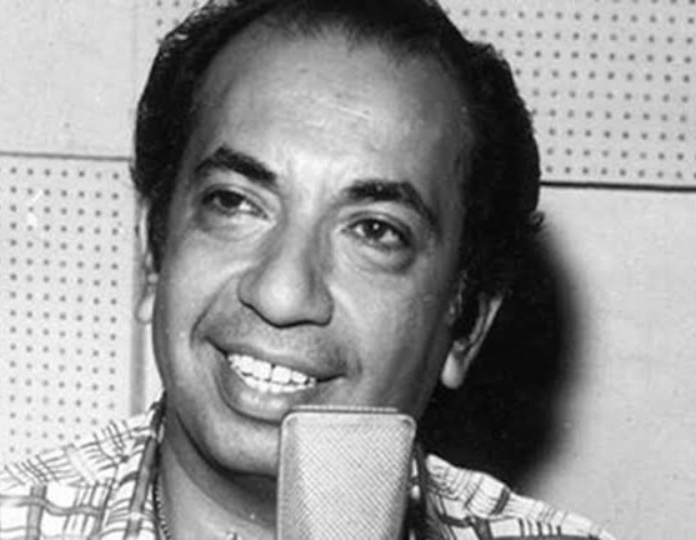
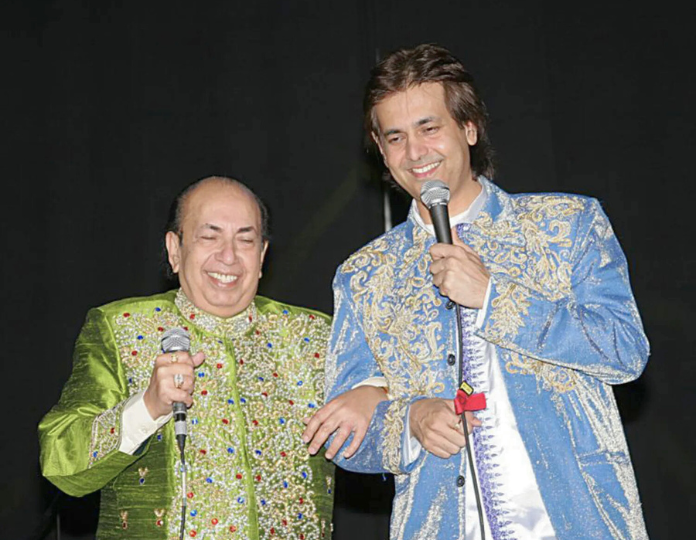
Another landmark song from their films was “Neele Gagan Ke Tale” from the film “Hamraaz (1967),” which won him the Filmfare Award for Best Male Playback Singer. Some other iconic songs from their collaboration include “Din Hain Bahaar Ke,” “Hum Jab Simat Ke Aapki Baahon Mein,” “Kisi Patthar Ki Moorat Se,” and “Na Munh Chhupa Ke Jiyo.” “Tum Agar Saath Dene Ka Vaada Karo,” “Neele Parbaton Ki Dhaara,” “Zindagi Ittefaq Hai,” “Sansar ki har shae,” “Thande Thande Paani Se Nahana Chahiye,” “Beete Huye Lamhon Ki Kasak Saath To Hogi,” “Chehra Chupaliya Hai Kisi,” “Dil Ki Yeh Arzoo Te Koi,” “Hum Mehnatkash Is Duniya Se,” “Ae Khuda-E-Pak,” “Tere Pyar Ki Tamanna,” that are still celebrated for their lyrical beauty and Kapoor’s dynamic range. His rendition of the title song of Mahabahart, “At Shree Mahabharat Katha,” is widely considered a milestone in his career.
Continuing Success
One of his other significant collaborations was with Manoj Kumar, another stalwart of the Indian film industry. Kapoor won the National Film Award for Best Male Playback Singer for Manoj Kumar’s “Mere Desh Ki Dharti” in Upkaar. Their collaboration produced hits like “Chhodkar Tera Pyar Ka Daman (Woh kaun thi?),” “O Mera Rang De Basanti Chola (Shaheed),” “Kaisi Haseen Aaj Baharon Ki Raat Hai (Aadmi),” “Dulhan Chali” “Bharat Ka Rehnewaala” (Purab Aur Pashchim), “Ek Tara Bole (Yaadgaar),” “Patla Patla Reshmi Roomal (Be-Iman),” “Aur Nahin Bas Aur Nahin” (Roti Kapada Aur Makaan),” “Ab Ke Baras,” “Durga Hai Meri Maa,” “Kranti, Kranti,” (Kranti), “Jeevan Chalne Ka Naam (Shor),” Humka Lai Chal Yaara Thandi Thandi Nahar Ke Kinare, and Kab Talak Shama Jali Yaad Nahin (Painter Babu), which became synonymous with Kapoor’s name.
Mahendra Kapoor’s versatility was not confined to patriotic songs alone. He was equally adept at romantic ballads, qawwalis, and bhajans, showcasing a range that few could match. Kapoor’s vocal range was vast, earning him the title “The Vibrant Voice of India.” He was also the first Indian playback singer to record music in English, showcasing his versatility. His collaboration with Boney M for a Hindi pop album, ‘M-3’, further highlighted his adaptability and talent.
Other Work
Some of his other natoble songs from 60s include Kaahe Bajai Tune Paapi Bansuriya (Kohraa), Har Dil Jo Pyar Karega (Sangam), Yeh Kali Jab Talak Phool Banke Khile (Aaye Din Bahaar Ke), Badal Jaye Agar Maali (Baharen Phir Bhi Aayengi), Tumhara Chahne Wala Khuda Ki Duniya Mein (Kahin Din Kahin Raat), Aankhon Mein Qayamat Ke Kajal, and Lakhon Hain Yahan Dilwale (Kismat), Jo Chala Gaya Use Bhool Ja (Saathi), Jiske Sapne Humen Roz Aate Hain (Geet), Ek Padosan Peechhe Pad Gayi, Ramchandra Kah Gaye Siya Se (Gopi),
Mahendra Kapoor’s legacy is not just limited to Hindi cinema. He sang in various Indian languages, contributing significantly to Gujarati, Punjabi, Bhojpuri, and Marathi films. His voice carried the essence of India, transcending linguistic barriers and touching the souls of listeners across the nation.
Throughout the 70s and 80s he contionue to sing hit songs. Some of his later songs include Do Bechare Bina Sahaare (Victoria No. 203), Fakira Chal Chala Chal (Fakira), Waqt Ki Hera Pheri (Hera Pheri), Tere Sang Pyar Main Nahin Todna (Nagin), Amar Akbar Anthony (Amar Akbar Anthony), Meri Saanson Ko Jo Mahka Rahi Hai (Badaltey Rishtey), Are Sun Bhai Saadho (Jaani Dushman), Dhoom Mache Dhoom (Kaala Patthar), Bhagi Re Bhagi Brij Bala (Rajput), Ae Aasman Bata, Maangi Thi Ek Dua (Shakti), Aye Khuda Shukr Tera (Razia Sultan), Holi Aayee Re (Mashaal), De Daru (Karma), Daata Tere Kai Naam (Daata), and many more.
Personal Life
Mahendra Kapoor married Pravinlata Kapoor, and the couple was blessed with four children: three daughters, Benu, Anu, and Purna, and a son, Rohan Kapoor. Rohan followed in his father’s footsteps, carving out his own niche in the entertainment industry as an actor and singer. He appeared in several films in the 1980s, such as ‘Faasle’ and ‘Love 86’, and later performed in stage shows alongside his father.
Despite his busy career, Mahendra Kapoor always found time for his family, which remained his anchor throughout his life. His home in Mumbai was a hub of warmth and hospitality, frequented by friends, family, and figures from the music and film industries. His personal interests included a love for good food, with Qeema matar, biryani, and butter chicken being some of his favourite dishes.
On September 27, 2008, Kapoor died following a cardiac failure at his home in Mumbai, aged 74. He was awarded the Padma Shri by the Government of India. He also won three Filmfare Awards for Best Male Playback Singer from five nominations. Mahendra Kapoor’s demise was a loss to the nation, but his songs continue to live on, inspiring and uniting people with their timeless appeal.
Mahendra Kapoor on IMDB




